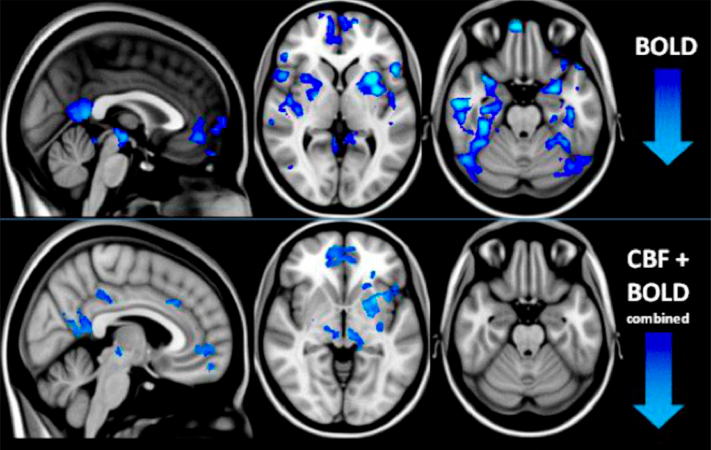This is your brain on magic mushrooms
January 24, 2012 by Amara D. Angelica
Stoner alert: psilocybin (the active ingredient in hallucinogenic mushrooms) messes with your brain.
OK, not exactly a news flash. But that’s what researchers in the U.K. and Denmark found when they scanned the brains of 30 people tripping on psilocybin.
But here’s what’s interesting: the researchers did two different types of functional MRI (fMRI) brain scans with two groups of 15 — one scan that measured blood flow throughout the brain (arterial spin labeling) and another that determined blood oxygenation (blood-oxygen level dependent, or BOLD) , both of which neuroscientists assume is an indicator of neural activity.
It has been commonly assumed that psychedelics work by increasing neural activity, but it turns out psilocybin actually reduced blood flow and neural activity in several brain regions, such as the thalamus and anterior and posterior cingulate cortex. And subjects in which these regions were most inhibited tended to report the most intense hallucinatory experiences in the experiment.
We interrupt this program ….
But the researchers suggested an explanation. These are the same regions of the brain that are hubs in the “default mode network” (DMN) — a network of brain regions that becomes active when you allow your mind to wander. So what apparently happened is that the subjects were able to achieve an unconstrained style of cognition — in other words, totally trip out without the usual reality constraints.
“These results may have implications beyond explaining how psilocybin works in the brain by implying that the DMN is crucial for the maintenance of cognitive integration and constraint under normal conditions,” the researchers said. “This finding is consistent with Aldous Huxley’s ‘reducing valve’ metaphor and Karl Friston’s ‘free-energy principle,’ which propose that the mind/brain works to constrain its experience of the world.”
The researchers also found that the drug improved people’s ability to access personal memories and related emotions, which could be helpful in psychotherapy.
Noise artifacts?
Of course, one variable the experimenters couldn’t fully control, despite using placebo infusion, was the frightening jack-hammer noise of MRI machines. Could that have contributed to the reduced neural activity in subjects in a more sensitive state?
Maybe the researchers could repeat the experiment using Silentium‘s active noise reduction technology (which doesn’t require headsets and could be located outside the MRI machine). This is suggested by one experiment with an MRI machine in which microphone measurements at the ear demonstrated 35 dB of acoustic attenuation at 600 Hz, corresponding to the dominant peak in the power spectrum of the MRI machine sound.
Anyone want to volunteer as a subject?
Ref.: Robin L. Carhart-Harris et al., Neural correlates of the psychedelic state as determined by fMRI studies with psilocybin, PNAS, 2012 [doi: 10.1073/pnas.1119598109]
